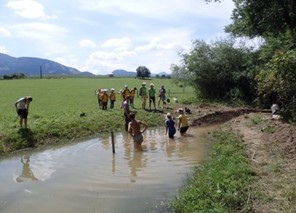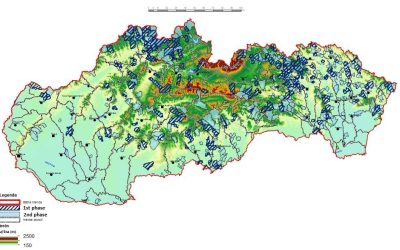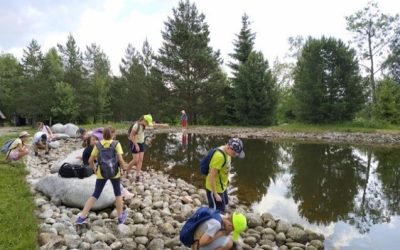situation problem
In Slovakia, the structure of the agricultural landscape changed significantly in the second half of the last century. Industrial agricultural production took off, drying out farmland over a period of several decades to the point where, without systemic change, the soil cannot regenerate and return to fertility.
Goal of the Project
Bringing life back to damaged land – to start the regeneration of agricultural land in the Drienová Park in the Rajecka Valley in the Žilina Region, where the area of such damaged land is 26 hectares. Keeping the water that falls into the area in the form of soot in the drained agricultural land.
The basic idea is that leaving more water on the farm will not only increase photosynthesis for biomass production, but also reduce temperature extremes, especially in summer, by increasing water evaporation through the vegetation.
Solution
The initiative to establish the Bioclimatic Park, as well as its development, is based on the idea of Ladislav Žideka, who encourages the local community and raises funds from domestic and international sources. The experience gained will be a very good and attractive example of innovative complex restoration of damaged ecosystems, human ingenuity and the return of a new generation of young people to the roots of responsibility for land, water and biodiversity.
Implementation
In order to capture rainwater, we first had to build dikes, water pits and ponds, which are the basis for biomass production and at the same time enough water for the livestock herd.
The basic principle is to recycle not only water but also nutrients, enriching the biological and chemical processes in the soil, promoting the biodiversity of the vegetation and improving the microclimate on the farm.
Results
The farm is very often visited by whole groups of children from schools, where they are provided with environmental education, the opportunity to observe the behaviour of animals
Biomass production is increasing year by year – restoring soil fertility
Larger quantities of livestock feed
Variety and diversity
Increase in the number of animals – development of farming, beekeeping and fish farming
300 native species of fruit trees



Other Implementations
Slovak landscape and Watershed Restoration (2010-2012)
Slovak Integrated Landscape and Watershed Restoration 2010-2012 by Richard Widows The article was originally published in 2015 by Jan Lambert in the Valley Green Journal Special Book Edition...
Revitalisation of Dúbrava village
The village of Dúbrava in the Spiš region (Slovakia) suffered from the siltation of sediments from water erosion, which resulted in deteriorated hydrology of small watercourses in the cadastre of...
Flood Protection System in Hlohovec
In the town of Hlohovec (Slovakia) there were regular floods due to improper ploughing of agricultural land. The town requested a project aimed at reducing erosion directly on agricultural land and...
Tatras Botanical Garden
The Botanical Garden of the Tatras High Mountain Flora in Tatranská Lomnica (Slovakia) suffered from artificially planted high mountain Tatra flora, which could not develop sufficiently due to the...
Dykes in Jarovnice
The village of Jarovnice in eastern Slovakia was hit by catastrophic floods. In 1998, they claimed the lives of 49 children. The state subsequently invested more than EUR 4 million in regulating the...
Tichý Potok
At the beginning of the 1990s, it was planned to build a dam above the Rusyn municipality of Tichý Potok in the basin of the Torysa River. The dam was intended to supply the population of Košice and...
Contact us
Send us a message and we will get back to you







